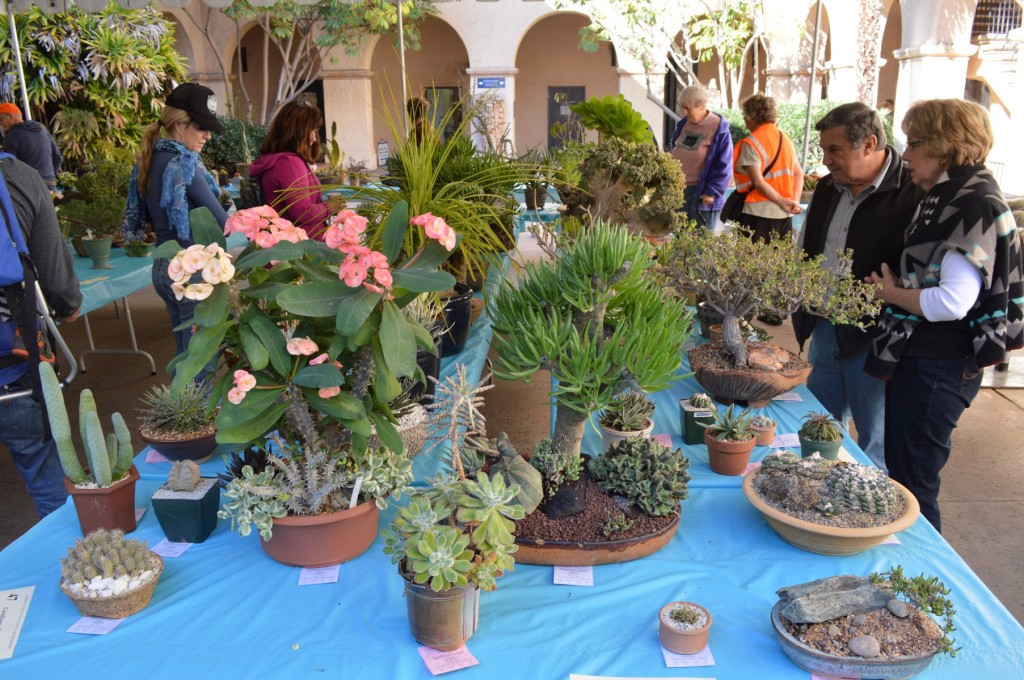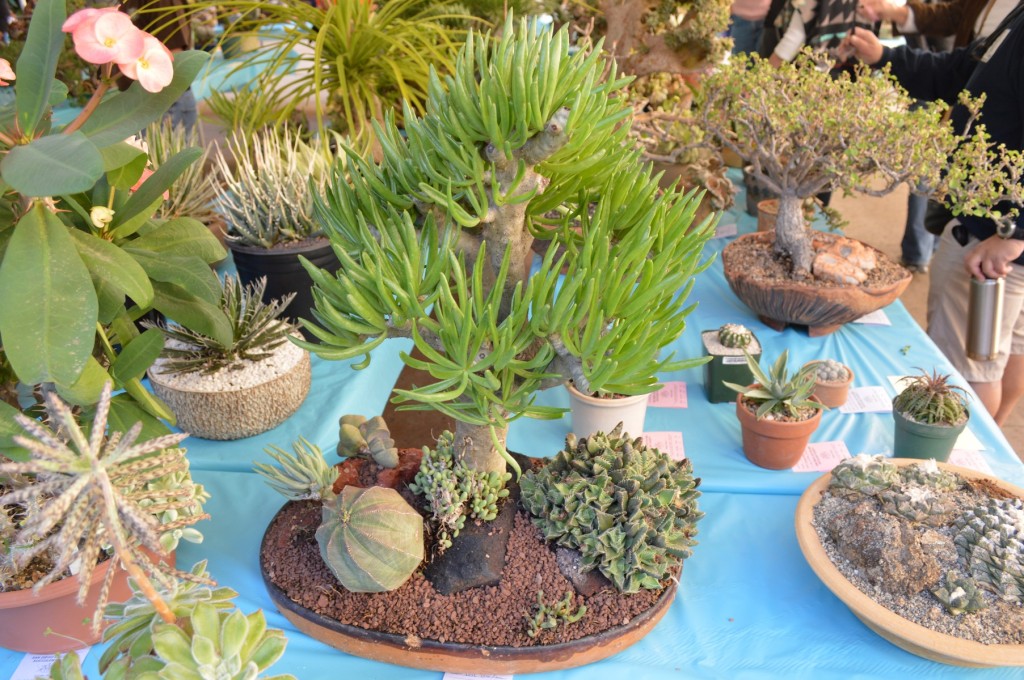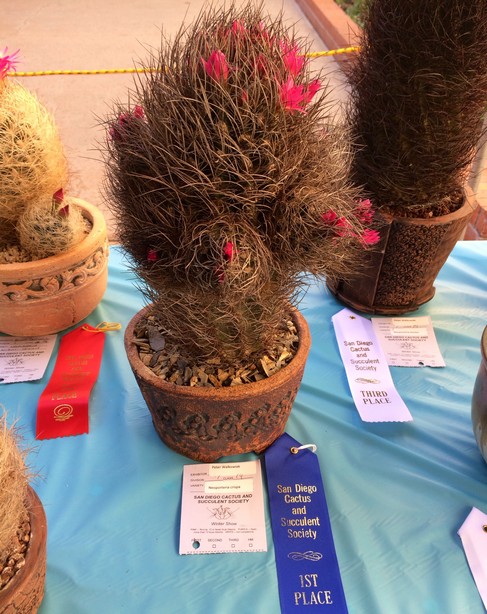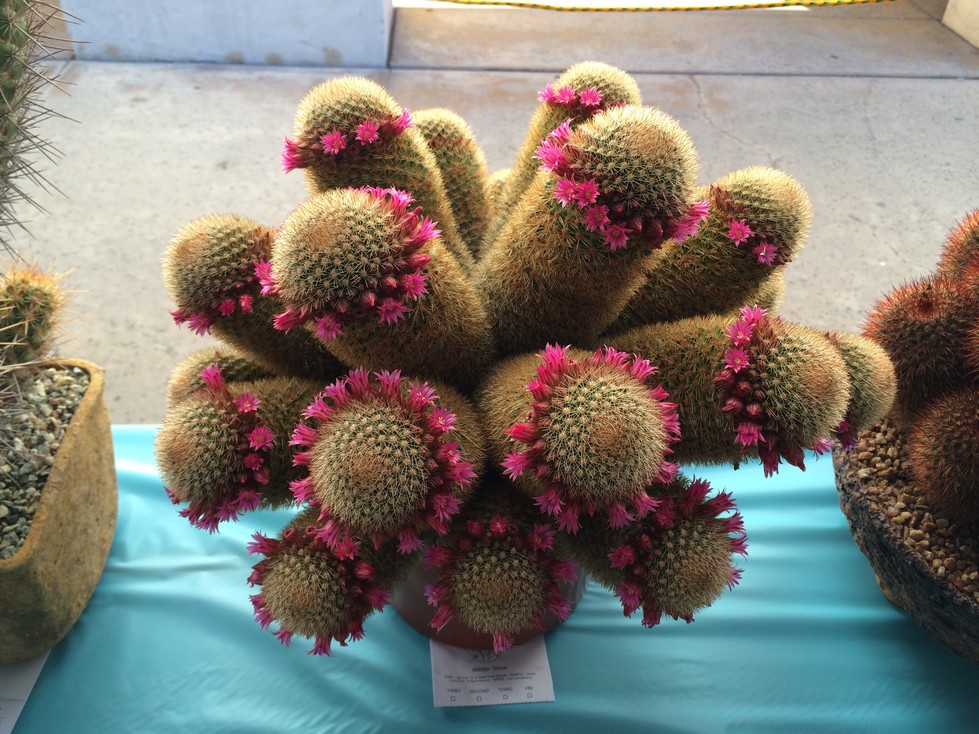On February 8th the San Diego Cactus and Succulent Society (SDCSS) had their annual Winter Show and Sale at Balboa Park. Over the last few years my interest in succulents has grown quite extensively, to the point where Aloes and Agaves now take up a big signature in my landscape. Because of my growing interest I decided it was time to go to one of these sales that I have heard so much about. So with a few other succulent lovers in tow, we headed to the show. Once at the doors we were greeted by many friendly volunteers that answered any questions we had. This is when I found out that the SDCSS is the largest affiliate of the eighty or so within the Cactus and Succulent Society of America (CSSA). That is quite impressive and certainly believable, considering the crowds we ran into for a local plant show.
The event was broken into two areas. The plant sale took place inside, while the outside played host to the showing area where plants were displayed for the public to admire. Later that morning judges voted for winners in each plant class. Each class had a novice division and an open division for the more experienced participants.
A lot of time and care goes into preparing display entries such as this one. I had always thought Cycad collectors to be the biggest group of oddball plant lovers. Cactus and Succulent lovers now get that billing. You won’t see many other plant society members going to these lengths for an amazing display.
This is Mestoklema Arborescens. This plant is a distant relative to the Ice Plant. In time it eventually forms a caudex and will have reddish bark, as seen.
These plants in the Agave display were up for award selection. As someone who collects Agaves I was a little disappointed by the fact I didn’t see anything unique or extremely rare. From left ro right we have Agave schidigera ‘Shira ito no Ohi,’ Agave Blue Flame Variegated ‘Streaker,’ Agave victoriae reginae ‘compacta,’ two forms of Agave utahensis, Agave filifera, and Agave x leopoldii.

This was my favorite Cactus display. These plants were in the South American Cacti Division and the “Eriosyce, Neochilenia, Neoporteria, Pyrrhocactus, Horridocactus” Class. After looking at these display plants I can see why these are some of the favorites of cactus collectors around the world. Beautiful plants.
This was Neoporteria Crispa and the Novice Award winner for the Class. My pick as well.
This was the winner of the Novice entry – Neoporteria nidus var senilis. The flowers on this plant were beautiful, as can be seen. This is why the San Diego Cactus and Succulent Society has a Winter and a Summer show. Plants like these only flower in Winter.
This is a very nice North American cactus called Mammillaria spinosissima ssp pilcayensis.
Here is another Mammillaria Spinosissima. This plant won first place in its class.
This is not a cactus, although it could easily pass as one. This is Euphorbia horrida x meloformis.
Euphorbia flanaganii is another from South Africa. The common name of this plant is “Medusa Head.”
Euphorbia is easily one of the most diverse plant genera. It is hard to imagine all three of these plants shown here are closely related. Euphorbia cylindrifolia ssp. tuberifera is from Madagascar.
Opuntia “Sunburst” is a variegated form on the common Opuntia ficus-indica.
Pleiospilos nelii (Split Rock Plant) is a species of flowering plant native to the Cape of South Africa.
This is a common succulent found in many specialty nurseries, however this echeveria agavoides “Ebony” is grown to perfection.
Echeveria agavoides “Romeo” is the new “It” plant for Echeveria collectors. This plant sold out fast at the sale and was gone by the time I went hunting.
One of my favorite Aloes won first place in its class. Aloe pearsonii is from Namibia and it is a very distinctive and difficult to grow Aloe. The Aloe to the left is a Kelly Griffin hybrid and the plant to the right is Aloe variegata, also known as Tiger Aloe.
This picture shows you the popularity of the plant sale. The line to check out ran along the back wall, and it took at least a 30 minutes’ wait before you got to the cash register. Membership to the San Diego Cactus and Succulent Society is only $15 for the year, and after what I learned on my first trip, it is well worth it considering by the time they let non-members in to shop, much of the collectable rare stuff had been purchased by paying members. So when the Summer Show hits in June, this guy will most certainly be a member.
One plant not readily available that I did find for sale was Aloe helenae. This is a beautiful tree aloe from Madagascar and it will make a welcome addition to my garden. This plant was $20.00, which I actually found surprisingly cheap compared to what some venders were charging for plants.
If you have never been to one of these Cactus and Succulent Society shows it is highly recommended you make an effort. I have no idea why a plant lover such as myself waited so long to make a show. For those interested, the next SDCSS Summer Show and Sale will be much larger and cover two days: June 7th and 8th. I hope to see you there.



















Comments: